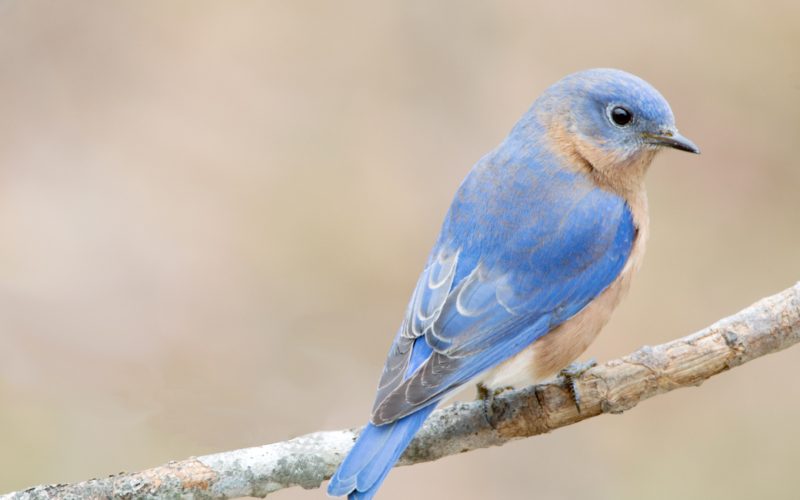
Courtesy Photo
Bluebirds appear blue because of an optical illusion involving layers of colorless feathers that interact with light waves, bouncing back only blue wavelengths of light toward our eyes.
Eastern Bluebirds flash a happy patch of clear blue sky in front of our eyes even on a dull day. But bluebirds aren’t really blue at all! This is an optical illusion known as structural color: the iridescent blue effect is produced by mostly colorless feathers in layers that interact with light waves, bouncing back only blue wavelengths of light toward our eyes. Actual blue pigment in a species’ feathers is rare, unlike Northern Cardinal feathers which are indeed red.
Arkansas and bluebirds naturally go together, thanks to artists Leo and Rita Ward, co-founders of Terra Studios in Durham, Ark. Ward created the now-famous, fadeless blue crystal glass “Bluebirds of Happiness” in 1982. Millions of these blown glass birds are sold around the world, bringing much happiness to recipients but also to our local artists at Terra Studios.
The likely popular culture origin of the phrase “bluebird of happiness” comes from other artists: musicians Sandor Harmati and Edward Heyman recorded the song “Bluebird of Happiness” in 1934. This is alluded to in the song “Over the Rainbow” from the Wizard of Oz, with many other bluebird references in American pop culture. These happy birds have significance in many cultures throughout the world, including in the myths of several Native American tribes and as a symbol of happiness found on oracle bone inscriptions during the Shang Dynasty in China, 1766-1122 BC. The Tang Dynasty in 618-906 AD transformed this myth into a Daoist fairy queen who protected “women who stood outside the roles prescribed for them in the traditional Chinese family” according to Suzanne Cahill in the Journal of the American Oriental Society.
Eastern Bluebirds are full of surprises, not just optical illusions. They can eat toxic Monarch caterpillars by squeezing out the insides until they’re flattened. Autumn flocks of ten to one hundred birds have been seen flying together, and in winter they often roost communally, adorably squeezed together in a nest cavity. Some birds are leucistic, a term that indicates dark eyes and varying degrees of white feathers (as opposed to albino birds which have pink eyes and a pure white coat). Even though they’re mostly monogamous, family dynamics vary occasionally: one male was seen with two females each using their own nest cavity. One nest may be incubated by two females mated with the same male, or two males with one female and a single nest.
Backyards become seasonal villas with a little encouragement from people. If you do build or buy a bluebird nest box and install it in your yard or park, maintain it regularly. Bluebirds rely on good landlords that keep the boxes clean and place predator guards on the poles to thwart omelet-seeking raccoons, snakes, cats and other predators. Otherwise your box becomes a yard ornament devoid of bluebirds (and, supposedly, less happy).
Amanda Bancroft is a writer, artist, and naturalist building an off-grid earthbag cottage for land conservation on Mt. Kessler. She and her husband Ryan blog about their adventures and offer a solar-hosted online educational center on how to make a difference with everyday choices at: www.RipplesBlog.org.










